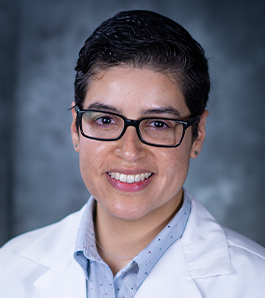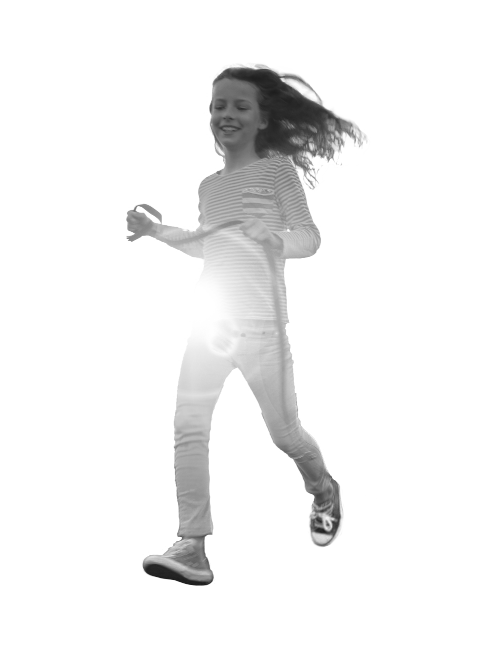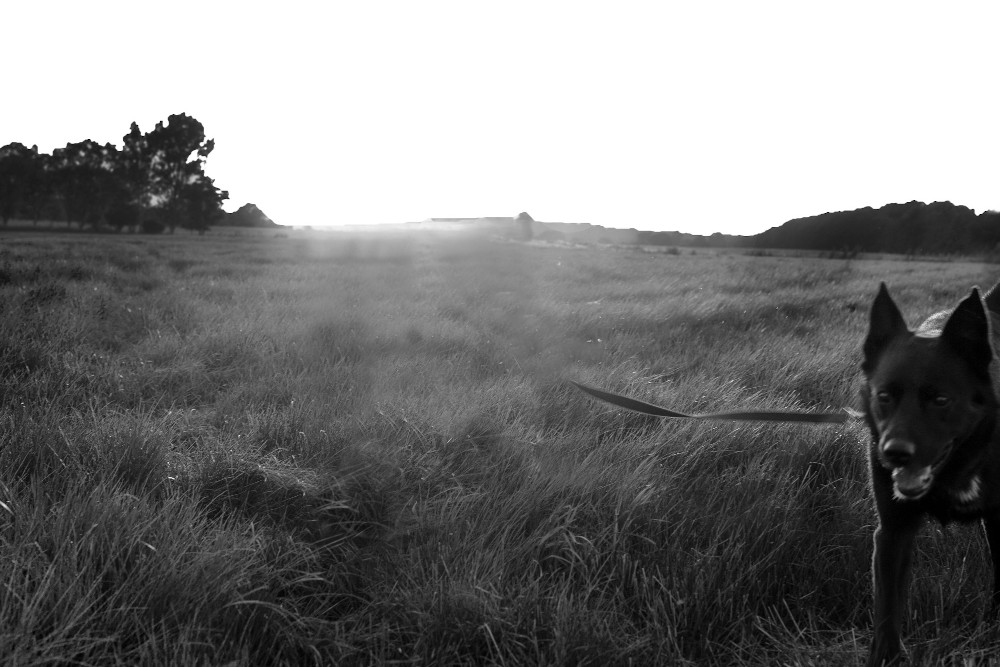Melanie: Welcome to Pediatric Specialty Care Spotlight with Shriners Hospitals for Children in Chicago. I'm Melanie Cole, and I invite you to listen as we discuss cerebral palsy and spasticity management.
Joining me is Dr. Gabriela Martinez. She's a physical medicine and rehabilitation physician at Shriners Hospitals for Children in Chicago. Dr. Martinez, it's a pleasure to have you join us today. Let's start for the listeners by telling them what a physical medicine and rehabilitation physician really is. What do you do?
Dr. Gabriela Martinez: So a physical medicine and rehabilitation physician also known as a physiatrist is a medical doctor who specializes in treating various neurologic and musculoskeletal disorders, that result in impairments with mobility and self-care. And so those range from conditions that affect the brain and spinal cord and musculoskeletal system. And they can be acquired from trauma, for instance, or congenital, meaning that the individual is born with the condition.
Melanie: So then tell us, this is just a little bit about yourself. Why is providing the best care for children with cerebral palsy so important to you?
Dr. Gabriela Martinez: So I actually have a younger sister with cerebral palsy. She was born prematurely at 24 weeks, which is the equivalent of six months. And this was back in 1988. And so she early on was diagnosed and was able fortunately to get hooked up with early intervention therapies and had a great team of doctors and therapists that helped her development and helped her blossom into what she's become. And this was over 30 years ago. Even though I didn't know it at the time because I was five years old. It's kind of circled back full circle for me. And I've realized how important all of those people that worked with her early on and what an impact they made in her life. So that's how it became important to me. She's been the motivation, the driving force for my career path.
Melanie: Isn't that lovely? I can hear the passion in your voice, and now we understand why you do what you do. So let's talk about cerebral palsy a little bit. What causes that spasticity? What's happening there?
Dr. Gabriela Martinez: So spasticity is the result of an injury to the brain or spinal cord above a certain level. And in cerebral palsy specifically that injury to the brain happens early on in life before the brain is fully developed. And that injury to the brain essentially results in an unbalanced hyperactive, so to speak, muscles and those muscles then are constantly contracting in an unchecked manner and the opposing muscles tend to be weak. So then this results in joints getting stuck in certain positions. And over time, this could lead to contractures, which is where the tendon shortens and can cause a series of difficulties. These contractures can lead to pain. There could be challenges with feeding and positioning. It could interfere with walking and the day-to-day things that children have to do.
Melanie: That's so interesting. And in your field, tell us how rehab inpatient and outpatient, can help these children to have a better quality of life. What are you doing that helps them?
Dr. Gabriela Martinez: Rehabilitation involves a large team of specialists, including physiatrist or physical medicine and rehab doctors, as well as skilled rehabilitation nurses, nurse practitioners. And then of course, our physical, occupational and speech therapists. We also work closely with recreational and music therapists, nutritionists, psychologists, social workers and care managers. So it's a very interdisciplinary team approach. And on the outpatient side, we here at Shriners have multidisciplinary clinics. One of them being our cerebral palsy clinic.
And so there, as a physiatrist, we try to manage their spasticity and we have a number of ways of doing that. We can use medications that kids can take by mouth. We also sometimes use Botox injections to help relax those overactive muscles. And then we work very closely with our orthopedic surgeon colleagues, because if that spasticity leads to contractures, they may need orthopedic surgery intervention.
So that's when they come in. On the inpatient setting, if a child has had a surgery by an orthopedic surgeon, then they oftentimes need a very intensive therapy course. So we have the ability to admit these kids after surgery to have intensive rehabilitation, which is a minimum of three hours of therapy a day. And we really get them up and moving and give them that burst of therapies to maximize their results after those surgeries.
Melanie: And tell us how have been your outcomes? What are you seeing with these children?
Dr. Gabriela Martinez: So we actually see really good outcomes with these kids that have had-- usually they have what we call single event multilevel surgeries. So say they've developed contractures at their hips, knees and ankles, then they can go in and have these multiple level interventions to improve their ability to walk and their mobility.
Children who have a milder cerebral palsy and are able to walk at baseline can have a decline in their mobility when contractures develop. And so after these surgeries, once they've had some healing, they do really great with intensive therapy. And then after doing several weeks of intensive therapy, we transition them to outpatient therapy so that they continue building on that strength.
Melanie: How can the families at home get involved in the rehabilitation for their children? Tell us how you work with the families so that they can reinforce what you're doing at Shriner's Hospital in Chicago.
Dr. Gabriela Martinez: So a big part of the psychiatrist's job is to educate the family and kind of explain to them what's going on with their child. And it's sometimes hard to understand spasticity. So I like to explain it just as I did earlier. It's that unchecked, hyperactive muscle working against weak muscles.
And so we try to be diligent with telling families how they can do rigorous stretching program at home, as well as wearing braces. So we often times provide braces to help children maintain good position in their ankles and legs for walking. And so family plays a big role in their rehabilitation. And I personally experienced that with my younger sister. It was really a whole family effort.
And then of course, our therapists are great with providing families with home exercise programs that they can keep up with so that they don't lose the gains that they've made after their therapies here. And really that's thing that's going to help long-term because, on an outpatient basis, they do weeks of therapy, perhaps two, three, four times a week. But what really is going to have the long-term effects is what's done at home in between that time.
Melanie: Such an important point that you made, Dr. Martinez. As we wrap up, tell us some of the ways Shriners Hospitals for Children in Chicago is caring for children who have spasticity. You mentioned a little bit about this multidisciplinary approach. And really tell listeners what you'd like them to know and why you recommend so highly Shriners Hospitals for Children in Chicago for cerebral palsy care.
Dr. Gabriela Martinez: So here at Shriners, we have a very comprehensive team approach. Everyone here works very closely together and we have the ability to remain in close communication. We have a very tight knit, very kind of homey feeling here. It's a relatively small setting hospital relative to other places. And that allows us to have the ability to be in communication with one another relatively easily.
So the physiatrists work closely in these multidisciplinary clinics with the orthopedic surgeons. And even if we're not scheduled to see a particular child, they can easily call us up to clinic for us to see someone on the spot.
We also have therapists available on the spot as well as well as our dietician, psychologists, social workers and care managers, and we also have orthotists and prosthetists available. So if we see a child for a new visit or a follow-up visit and they need bracing or they need new ones because they've outgrown their current ones, then we just call the orthotist and then they're able to cast them for new braces during the visit.
We also have a gait lab here that provides very extensive evaluation of a child's walking and gait mechanics. So that gives us a very thorough information about how we can best help the child, whether that be bracing or recommendations regarding surgical planning.
So here at Shriners, we really have a very close-knit comprehensive team. And I have, as I said earlier, personally seen the benefit of such a team with my sister and how all of that impacted her development. And she was born very prematurely back then in 1988, and with all the interventions she had, she developed the ability to walk.
And so this is a great place to bring your child. We really have many things to help them that are easily available on the spot and in one setting. So if families are coming from out of state, we can really have them see all of these specialists at once so that we limit their back and forth and travel times. It's really a great place. We really have the comprehensive team to provide that thorough care.
Melanie: Wow. Thank you so much, Dr. Martinez. I quite imagine that you are just wonderful with your patients. And so thank you so much for everything you're doing and for joining us today and telling us about what you're doing at Shriners Hospitals for Children in Chicago. And to make an appointment, you can call 773-385-KIDS or you can visit our website at shrinerschicago.org for more information and to get connected with one of our providers.
That concludes this episode of Pediatric Specialty Care Spotlight with Shriners Hospitals for Children in Chicago. Please remember to subscribe, rate and review this podcast and all the other Shriners Hospitals for Children Chicago podcasts.
I'm Melanie Cole.








